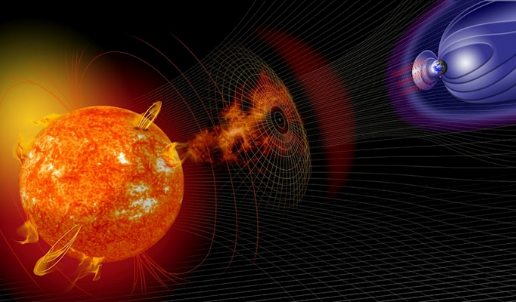 Illustration of the interaction between the Sun, solar wind, and Earth's magnetosphere. Image credit: NASA.
Illustration of the interaction between the Sun, solar wind, and Earth's magnetosphere. Image credit: NASA.
The Space and Astrophysical Plasma Physics group at Queen Mary University of London is part of the Astronomy Unit, which is one of the four research divisions in the Department of Physics and Astronomy.
The group undertakes fundamental research into the variety of space and astrophysical plasmas that make up the majority of ordinary matter in the universe. Plasmas in the solar system – the Sun, solar wind, planetary magnetospheres, and the outer heliosphere – display complex and dynamic behaviour that can be probed in detail with in situ and remote spacecraft observations. Further out, astrophysical plasmas exist in the form of the interstellar medium, black hole accretion systems, astrophysical jets, and galaxy clusters, under a variety of more extreme conditions.
The group at Queen Mary has a long history of research in space plasma physics, dating back to the work of Vincenzo Ferraro in the 1950s. Since then, it has been involved in many space missions, including AMPTE, Ulysses, Cluster, MMS, Solar Orbiter and Parker Solar Probe. The group is also involved in the development of cutting edge computer simulations to model and understand the physics occurring in space and astrophysical plasmas, for example shocks, turbulence, reconnection, and particle acceleration. See here for more details of research we carry out.